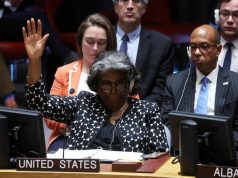Prelude
This article serves as the foundation for my forthcoming monograph which is tentatively titled Garbocracy: Towards a Great Human Collapse. The arguments around garbology, garbo-imperialism, and garbocracy in this article widely revolve around the politics of accumulating, garbaging, and regulating the disposal and distribution of domestic, industrial, and digital wastes in daily life.
Politics of Accumulating
One day, in the city of Kolkata, as I was walking past the heap of garbage in my locality towards the nearby vegetable market, I was absolutely freaked out and I said to myself that from the next day I won’t be taking this road and will be taking a different and hopefully a cleaner way. But, very soon the alternate road was also filled up with piles of waste. The more I tried to find alternate pathways, the more I encountered piles of garbage around me. After a few days, the garbage appeared to me like a scepter that is consistently chasing me, haunting me, and suffocating me. I realized that finding alternate pathways cannot be a solution to this problem. The experience also provoked me to investigate the various factors that contribute to accumulating and disposing of wastes in public spaces, especially when it is common sense that such an act may lead to the release of poisonous gases, an outbreak of deadly diseases, and other problems, and how the various patterns of accumulating and disposing of wastes are impacting our daily life. The process of analyzing the patterns of accumulating and disposing of waste in the public has opened in front of me a vast epistemological, ontological, and garbological gateway of social, political, cultural, religious, gendered, communal, ideological, psychological, and geographical factors of waste production and disposition. To elaborate further, every society does not collect and dispose of waste in the same manner. For instance, in the slums, townships, and other places that are primarily occupied by the socio-economically backward communities the wastes are disposed of in more unorganized and unhygienic ways as compared to the localities that are occupied by the middle-class and high-class (The terms ‘middle-class’ and ‘high-class’ have been used with respect to the socio-economic status of communities) communities.
While in the organized middle-class and high-class residential areas the removal of domestic and public wastes is regularly monitored by the local municipal organizations, such facilities are hardly available in the socio-economically backward areas. In fact, on a lot of occasions, the wastes that are collected from middle-class and high-class residencies are dumped in the townships and slums. This process of dumping waste in the townships and slums is not just a casual act and is systemically motivated by multiple forms of social, cultural, and political factors like caste biases, religious demonization, normalization of socio-economic crisis, gender marginalization, etc. Patricia Strach and Kathleen S. Sullivan philosophize these factors as “politics of trash.” Strach and Sullivan’s book argues how historically the municipalities in the United States used corruption as a tool to clean garbage from American cities between 1890 and 1929. The contemporary patterns of disposing of garbage in my locality and other parts of India and the world is no different. In order to further justify the relationalities between corruption, society, and garbage, let me share an example from my locality. To protest against the public disposal of garbage near our housing complex by the cleaners, a collective complaint was launched in the municipality. After several rounds of complaints, the municipality chief assured us to pay a surprise visit and look into the challenges. But, a day ahead of his visit, the piles of garbage were removed and the roads were washed and cleaned. By the time he visited, there was no garbage around our housing complex and all our complaints were downplayed as useless and fake. Again, the next day, the cleaners started dumping garbage around our housing complex.
The whole act of looking into our complaints by the municipality was nothing more than a well-outlined strategy of eye-washing the public. Along with written complaints, video recordings and images of cleaners dumping waste in our locality were also sent. But, none of those proofs were taken into consideration. Moreover, despite guaranteeing a surprise visit, the cleaners were informed ahead of time so that they get a sufficient scope to misguide the municipality team and falsely prove our complaints as fake. While staying in Varanasi, I have observed how, especially before local elections, wastes from one locality will be disposed into another locality, so that the voters can be successfully misled by the political parties about the capability or incapability of municipality organizations. These instances of the ‘politics of accumulating’ open up spaces to analyze the social, cultural, historical, and psychological factors that regulate our habitual patterns of disposing of waste, which I argue is the ‘politics of garbaging.’
Politics of Garbaging
The politics of garbaging can be understood as a continuous performance of disposing of garbage across selective physical, geographical, and geological spaces so that certain socially, culturally, politically, and economically privileged communities can gain control over others. It is important to note that this performance is not momentary in nature and is a deep historical act, and it has been systematically curated by the “exploitative, garbological and fast capitalistic system.”[1] The ritual of using garbage as a tool to overpower and erase communities, institutions, and the natural environment has been historically prevalent through channelizing wastes from one geographical region to another; choking communities and the natural environment to death by strategically releasing poisonous gases from discarded chemicals; polluting the natural water bodies and artificially creating ecologically sustainable spaces; piling wastes on natural lands and then polluting the adjacent environment by burning them; and in many other ways. This “translocality”[2] of production and distribution of garbage is meticulously underlined with the factors of “race, ethnicities, color, religious affiliation, cultural heritage, or political learnings.”[3] Besides disrupting the natural environment, the politics of garbaging have also led to the reconfiguration of the already existing racial, cultural, political, social, and economic divisions in India. The different ways of accumulating and dispensing waste have led to the cultural stigmatization of certain communities on the one side and the spiritual celebration of certain communities on the other.
Politics of Regulating
The stigmatization and celebration of different communities on the basis of their relation to waste not only unfolds a cataclysmic present but also foretells a “distorted, terrifying” and “geoengineered future.”[4] To further understand this argument, let us look into an instance from India that shows how the habitual processes of disposing of garbage have led to the foundation of the binaries like rich community/poor community, hygienic community/unhygienic community, pure community/impure community, etc. Since my childhood days, I have often heard people saying that the Muslim communities staying near our residential area are very dirty and unhygienic. And, it is indeed true that the public spaces in their locality are regularly filled with piles of domestic waste. However, the reason behind such a scenario has less to do with Muslims being dirty and unhygienic and more to do with the political intentions and the strategic ignorance of the local municipality. Historically, the Muslim-occupied community that I am talking about evolved as a refugee colony in the 1970s during the Bangladesh Liberation War and besides Muslims, there are also quite a few refugee Hindu residents. During the war, when the refugees escaped from Bangladesh to Kolkata, they mostly resided in the unclaimed and unoccupied lands of the city. Later on, many of these lands have either been used to construct offices and residencies or have been unethically used as a ground for dumping wastes by the houses and the municipalities. The consistent socio-political process of invisibilization, marginalization, and stigmatization forced many refugees to regard these dumping grounds as their permanent residencies.
Apart from regularizing anti-refugee socio-political attitudes, using the Muslim-dominated residential areas near my locality and other parts of the city as a potential space for disposing of garbage also add fuel to the existing narratives on anti-Muslim hatred. Along with other problematic parameters, this is how the politics of garbaging function as a tool to maintain and regulate the prejudiced identities of the Muslims and the refugees in the city as ‘dirty infiltrators’ and ‘criminals.’ However, on many occasions, the piling and scattering of wastes are celebrated as a performance of spirituality. This aspect can be widely seen in the context of many Hindu temples, where the offerings that are made to the deities are openly dumped inside the temple premises. The visual of scattered wastes inside Hindu religious places is often hailed as a public display of spiritual richness. In the process of generating multiple patterns of social dynamics and power structures through accumulating and disposing of wastes, the expansion and invasion of garbage within the human and the natural civilization as garbo-imperialist entities has not been sufficiently realized. Though, it is a selective group of humans who are responsible for piling and regulating wastes in the public areas and are stuck in the false imagery of controlling other humans and other living civilizations, in reality, the heaps of garbage ‘act back’ at the humans and other forms of civilization as living objects, and physically, ideologically and semiotically counter-regulate the existential patterns in an imperialistic fashion. This aspect can be widely observed in which humans and other living civilizations are undergoing a continuous process of uprooting and re-rooting due to polluted rivers, toxic ocean waters, and the release of poisonous gases from waste burning, and other forms of pollutants. Before it is too late, let us collectively realize and accept that another violent form of imperialism is unfolding across the globe and which in many ways will be more physically and ideologically violent, more institutionally systemic, and more culturally and emotionally ingrained than the preceding ones.
The Author Sayan Dey grew up in Kolkata, West Bengal, and is currently working as a Postdoctoral Fellow at Wits Centre for Diversity Studies, University of Witwatersrand. He is also a Faculty Fellow at The Harriet Tubman Institute, York University, Canada, and Critical Cultural Studies Faculty at NYI Cultural, Cognitive and Linguistic Studies, New York. He can be reached at www.sayandey.com
[1] Ranjan Ghosh, The Plastic Turn, Cornell University Press, 2022, p. 121.
[2] Ibid
[3] Ibid
[4] Travis Holloway, How to Live at the End of the World: Theory, Art and Politics for the Anthropocene, Stanford University Press, 2022, p. 60.






